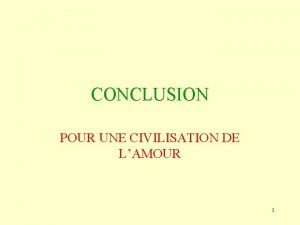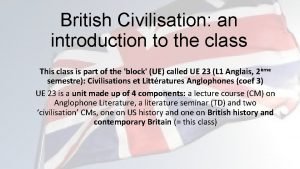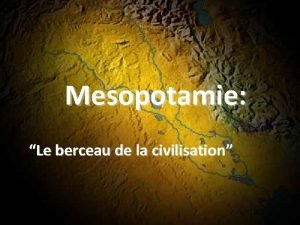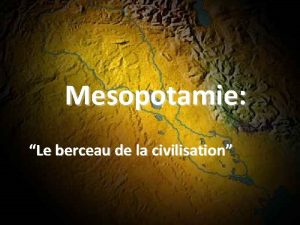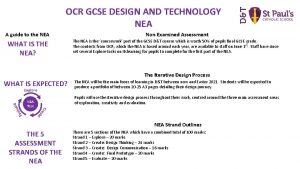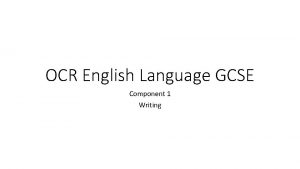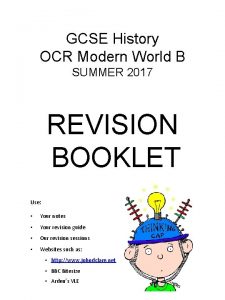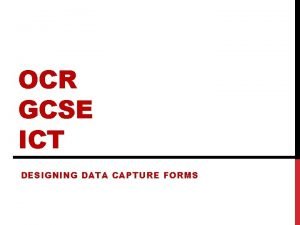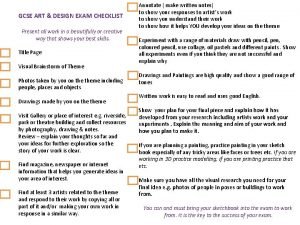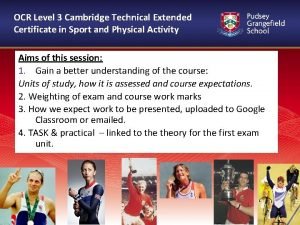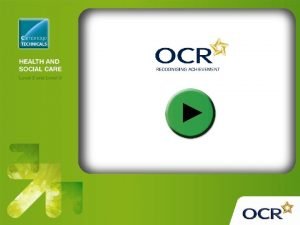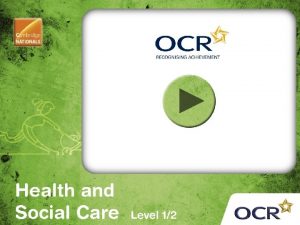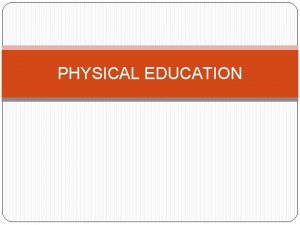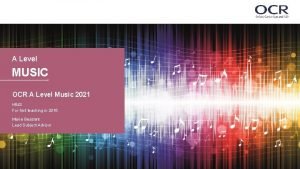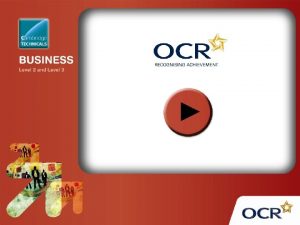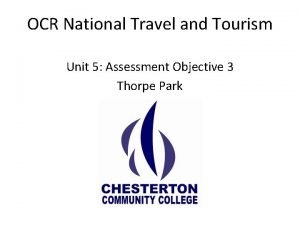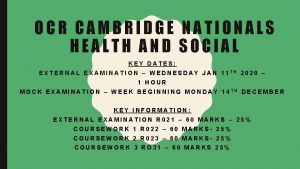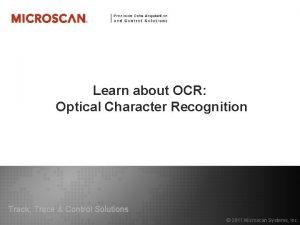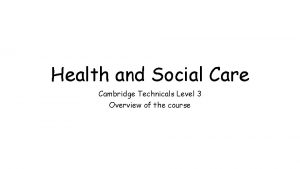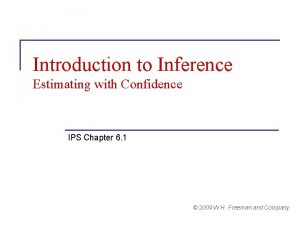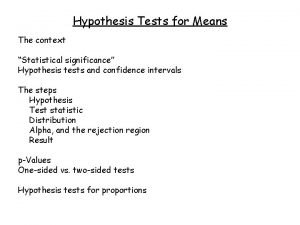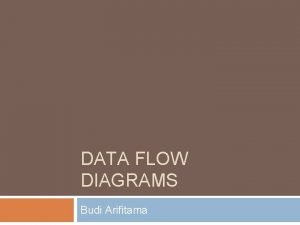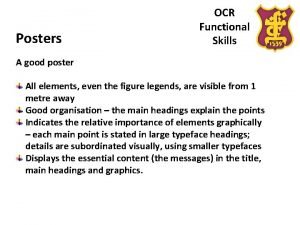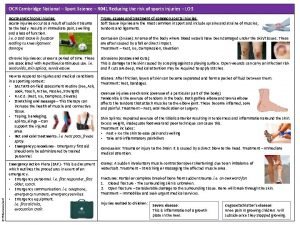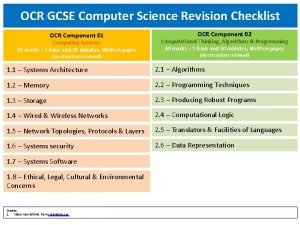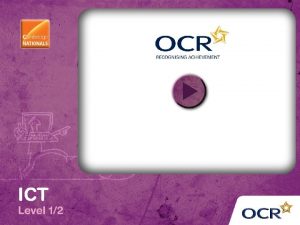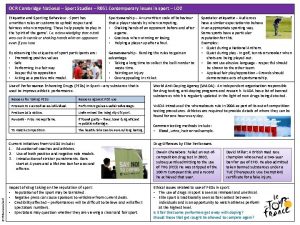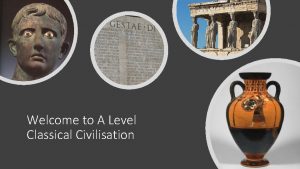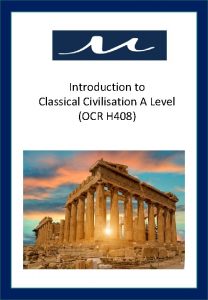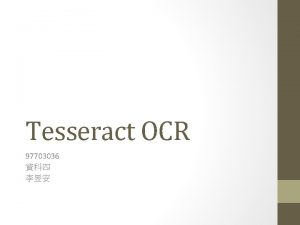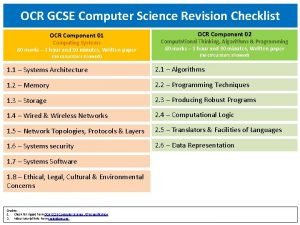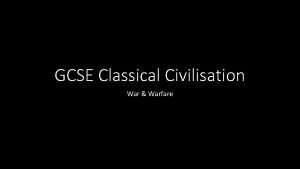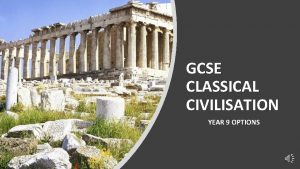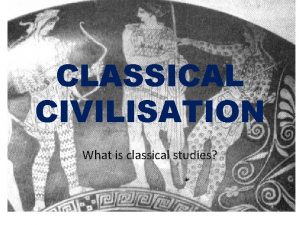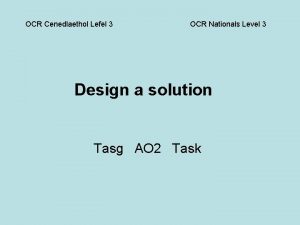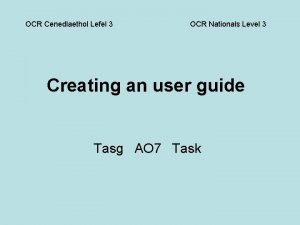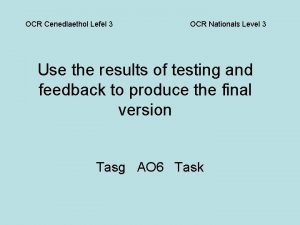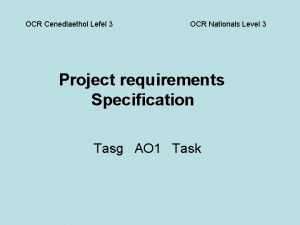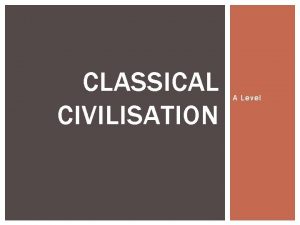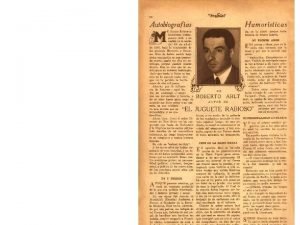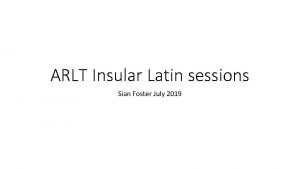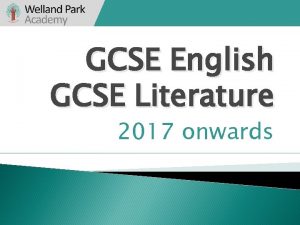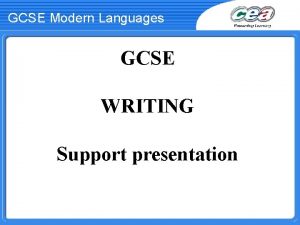OCR GCSE AND A LEVEL CLASSICAL CIVILISATION ARLT








































- Slides: 40

OCR GCSE AND A LEVEL CLASSICAL CIVILISATION ARLT – 4 March 2017

Bloomsbury textbooks http: //www. bloomsbury. com/uk/education/secondary/classics/

A Level textbooks • World of the Hero • Components 21 and 22: Greek Theatre and Imperial Image • Components 23 and 24: Invention of the Barbarian and Greek Art • Components 31 and 34: Greek Religion and Democracy and the Athenians • Components 32 and 33: Love and Relationships and Politics of the Late Republic • £ 14. 99

OCR Resources • OCR Source booklets • Delivery Guides / Planning guides • Exemplar answers

Mapping documents – Old to new

The general changes • Linear assessments, no UMS in any of OCR’s Classics specs • New grading scale at GCSE (9– 1); AS (A to E) and A Level (A* to E) remain the same • GCSE – no tiering; no controlled assessment

GCSE (9– 1) Grade 7 aligned to grade A which means broadly the same proportion of students will achieve a grade 7 and above as currently achieve a grade A and above Grade 4 aligned to bottom of grade C and above which means broadly the same proportion of students will achieve a grade 4 and above as currently achieve a grade C and above Grade 1 aligned to bottom of grade G and above which means broadly the same proportion of students will achieve a grade 1 and above as currently achieve a grade G and above

The new approach • Tailored approach: approximately 20% of all GCSE entries above grade 7 will achieve a grade 9 • This is calculated as follows: 7% + % candidates awarded a 7 or above 2 • So, if 77. 38% of GCSE Latin students get an A grade or above, suggests 45. 69% of those getting a grade 7, will get a grade 9

Differences between the models Subject. Entry (000) % A* & A 20% of 7 Tailored approach All GCSEs 4897 8. 4 24. 0 4. 8 5. 1 Latin 9 44. 2 71. 5 14. 3 30. 5 Classical Greek 1 62. 4 83. 7 16. 7 40. 9 Based on 2016 results Class Civ 4 13. 7 38. 7 7. 7 10. 2 Ancient History 1 15. 6 32. 7 6. 5 7. 6 https: //www. gov. uk/government/uploads/system/uploads/attachment_data/file/529862/Setting _grade_standards_part_2. pdf

Course Overview: A Level Component title Weighting Topic options Iliad or Odyssey The World of the Hero 40% and Aeneid Culture and the Arts Belief and Ideas 30% • • Greek Theatre Imperial Image Invention of the Barbarian Greek Art 30% • • Greek Religion Love & Relationships Politics of the Late Republic Democracy and the Athenians

Co-teachability: AS and A Level • The World of the Hero = only the Homeric epic • Culture and the Art @ AS Level = Greek Theatre & Imperial Image only • Content exactly the same as A Level but no secondary sources / scholars

AS Level take-up June 2016 entries June 2017 entries AS Level Latin 1, 608 entries* 363 centres 422 entries 138 centres A Level Latin 1, 160 centres 339 centres 1, 241 entries 341 centres AS Level Classical Greek 291 entries* 115 centres 61 entries 32 centres A Level Classical Greek 240 entries 103 centres 246 entries 105 centres

Tweaks Greek Theatre (H 008/21 & H 408/21) • for Oedipus the King, translation by Fagles, in The Three Theban Plays (Penguin) • for Bacchae and Frogs, the appropriate volume of Cambridge Translations from Greek Drama Invention of the Barbarian (H 408/23) • ‘For Medea, the appropriate volume of Cambridge Translations from Greek Drama, trans. Harrison; • for The Persians translation by Vellacott, as in Prometheus Bound and Other Plays (Penguin)’

FAQs: Classical Thought • NOT source based, conceptual study • Quantified in terms of key thinkers and areas of thought • Stanford Encyclopaedia of Philosophy • Textbooks • Delivery Guides

FAQs: Scholars “It is my view that the single most important purpose of A Level qualifications is to prepare young people for further study at University …” Mr Gove’s Announcement in March 2012 • Similar to how Religious Studies etc have worked for a long time • Can be a quote, paraphrase or general reference • The key is that it is used and understood fully • Scholars only required in 30 mark essays • Key is to teach a variety of sources, views and ideas and encourage students to engage with these

Scholars: What resources? • Examples of scholars given in the appendix of the specification; the Bloomsbury textbooks; OCR’s Delivery Guides • • • Omnibus articles Yale You. Tube video Massolit videos Academic blogs Podcasts JSTOR articles

For example… Michael Silk says that there is no real romantic love in Homer’s Iliad, however this does not seem to reflect the very tender meeting between Andromache and Hector in book 6… Griffin says that Virgil was writing the Aeneid during a ‘crisis in poetry and politics’ and his aim was to address this crisis by providing a way for poetry to address big themes and interact with the political situation… The ending of Medea, with her exaltation, is problematic for the audience both now and in the ancient world. Modern feminists might see a message of female empowerment in this, but it is unlikely that this was Euripides’ original intention…

FAQs: Extra SAMs?



How long for each question? • Short answer questions < 7 minutes • 10 -mark questions >14 minutes • 20 -mark question > 28 minutes • 30 -mark essay > 42 minutes

GCSE Course Overview Component title Thematic Weighting 50% Topic options Myth and Religion (J 199/11) Women in the Ancient World (J 199/12) The Homeric World (J 199/21) Literature & Culture 50% Roman City Life (J 199/22) War and Warfare (J 199/23)

GCSE Assessment Objectives Assessment Objective Weighting Demonstrate knowledge and understanding of: AO 1 • literature and visual / material culture from the classical world • how sources reflect their cultural contexts 60% • possible interpretations of sources by different audiences and individuals AO 2 Analyse, interpret and evaluate literature and visual / material culture from the classical world, using evidence and producing coherent and reasoned arguments. 40%

Thematic Study • Choice of two options • Covers Greece and Rome • Consists of 8 topics: designed to be wide ranging and varied • Both literary and visual/material prescribed sources • Exam will draw on prescribed and unseen sources throughout

Key topics Myth and Religion (J 199/11) Women in the Ancient World (J 199/12) • Gods • Women of Legend • The Universal Hero: Heracles/Hercules • Young Women • Religion and the City: temples • Women in the home • Myth and the City: Foundation Stories • ‘Improper’ women • Festivals • Women and Religion • Myth and Symbols of Power • Women and power • Death and Burial • Warrior women • Journeying to the Underworld • Women to be feared

Literature and Culture Literature • Study of an area of ancient culture and society • Study of a selection of ancient literature qua literature • Prescribed sources all visual/material • Assessment will use unseen sources • Prescribed sources all literary • Assessment will NOT use unseen sources

Tweaks Myth and Religion (J 199/11) • The Great Panathenaia

Structure of assessments

Structure of assessments

Knowledge and Understanding questions • These are short answer questions testing AO 1 only • These might be ‘knowledge in isolation’ (basic recall) or ‘knowledge and understanding’ – In reality this distinction means more to setters than students! • knowledge in isolation – Q: – A: • Who was the first husband of Helen of Troy? (1) Menelaus (1) knowledge and understanding – Q: – A: Who is depicted in this statue and how do you know? (2) Athene (1) because of her helmet / shield (1)

Significance questions • Short answer questions which test AO 1 and AO 2 o 1 st part – give two pieces of information/knowledge (AO 1) o 2 nd part – say why this was important/significant (AO 2) Q: (a) (b) A: (a) (b) Describe where the dead were carried to before they were buried or cremated. (2) What does this suggest about Roman attitudes to the dead? (1) Two from: To the cemetery (1) outside the city/town (1) beyond the sacred boundary (1) One from: that the dead could pollute the city (1) that they did not belong in the city of the living (1) that dead bodies should have respect (because they are put in a cemetery, not just anywhere) (1)

Stimulus questions • Short answer questions testing AO 1 and AO 2 • In Literature and Culture papers, these are worth multiples of two marks – 1 (AO 1) + 1 (AO 2) • In Thematic papers, Section 3, these are worth multiples of three marks – 1 (AO 1) + 2 (AO 2) – Command word “explain” used for these questions (and nowhere else) to indicate the need for more explanation

Stimulus Questions Literature and Culture Q: Identify three features of this image, and suggest what each might tell us about Roman naval warfare. A: Examples might include three from: • It was important to them and deserved commemoration (AO 2) – it is the focus of this detailed and ornate relief (AO 1) • ships had multiple banks of oars and must have been fast (AO 2) – shows a warship with two banks of oars (and possible a third bank of shipped oars) (AO 1) • the ships carried large amounts of soldiers (AO 2) – these are standing along the ship and it appears crowded (AO 1) • these soldiers must have boarded other ships, or protected against being boarded as they are dressed for close combat (AO 2) – carrying spears (AO 1) carrying shields (AO 1) wearing armour more suited to hand combat than rowing (AO 1)

Stimulus Questions – Explain Thematic Example Q: Explain how both sources show warrior women with qualities usually seen as masculine. A: Source I one from: Variety of weapons mentioned (1) reference to hunting (1) dressed in a tiger’s pelt not a robe (1) Plus Source J one from: battle scene (1) Amazons engaged in fighting (1) Amazon riding a horse (1) Amazon on the floor trying to defend herself and looking at her attacker (1) Four from: • Source I: Camilla is shown handling a variety of weapons which would usually be reserved for men (1) she is good with these weapons (1) she hunts effectively (1) she doesn’t have beautiful things like a ‘gold clasp’ (1) instead more masculine clothing (1) • Source J: Amazons shown fighting, which is usually the preserve of men (1) they are proficient enough to fight against men (1) they do battle in a similar way to men; riding horses and making use of shields (1) Amazon on the floor might be seen as brave (1) as she is looking at her attacker not cowering (1)

8 -mark detailed response • Equally weighted AO 1 and AO 2 • Connected to a stimulus; starting point, need to bring in extra information and examples • Marked using a holistic Levels of Response Grid Q: What do you think is most impressive about Mycenaean frescoes? Use the source as a starting point and your own knowledge in your answer. (8)

15 -mark extended response • AO 1 worth 5 marks, AO 2 worth 10 • Intended to be an essay, just a lower tariff • No stimulus; choice of questions, one from two • Thematic: comparative question in ‘Greece and Rome’ Q: In which society did women wield the most political power, Greece or Rome? Justify your response. • Literature and Culture: one in each section Q: To what extent do you think a Roman boy’s education prepared him for life? Justify your response.

Quality of marking? “Always had great results on Virgil at A 2, but less successful with tragedy. This year tragedy successful, but Virgil really poor. I have not changed what I do, and really diligent and bright students have been in tears with disappointment. Just feel I am running out of strategies to target improvement when results seem so random. ” Quote from the Classics Library

Quality of marking? • Lower tariff questions o GCSE highest tariff 15 marks vs 30 marks in old GCSE units o AS Level highest tariff 25 marks vs 45 marks in old AS units o A Level highest tariff 30 marks vs 50 marks in A 2 units • More point-by-point questions in GCSE & A Level; fewer subjective decisions in GCSE • Holistic marking grids • Papers broken down into clear topic areas • All legitimate approaches and material will be credited

Any other questions?

Contact details Alex Orgee Email: classics@ocr. org. uk Telephone: 01223 553998
 Carina arlt
Carina arlt What are the seven characteristics of civilization
What are the seven characteristics of civilization La civilisation, ma mère question réponse
La civilisation, ma mère question réponse Civilisation de l'amour
Civilisation de l'amour Sarah pickard
Sarah pickard La mesopotamie berceau de la civilisation
La mesopotamie berceau de la civilisation Mésopotamie berceau de la civilisation
Mésopotamie berceau de la civilisation Ocr gcse dt
Ocr gcse dt Ocr gcse pe practical specification
Ocr gcse pe practical specification Gcse article writing example
Gcse article writing example Ocr gcse business studies past papers
Ocr gcse business studies past papers Worksheet 2 searching algorithms answers
Worksheet 2 searching algorithms answers How useful is this source
How useful is this source Ocr ict gcse
Ocr ict gcse Ocr j276/01
Ocr j276/01 Gcse art checklist
Gcse art checklist Ocr level 3 sport and physical activity
Ocr level 3 sport and physical activity Ocr cambridge technicals
Ocr cambridge technicals Ocr health and social care level 3
Ocr health and social care level 3 Ocr cambridge nationals health and social care
Ocr cambridge nationals health and social care Lmi4all
Lmi4all Ocr cambridge technicals level 3
Ocr cambridge technicals level 3 Ocr cambridge technicals level 3 sport
Ocr cambridge technicals level 3 sport Ocr
Ocr A level chemistry ocr organic synthesis
A level chemistry ocr organic synthesis Ocr
Ocr Cambridge technicals business level 3 resources
Cambridge technicals business level 3 resources Ocr travel and tourism
Ocr travel and tourism Cambridge national key dates
Cambridge national key dates Ocr
Ocr Ocr cambridge technicals health and social care
Ocr cambridge technicals health and social care Ci value
Ci value Confidence level and significance level
Confidence level and significance level Confidence level and significance level
Confidence level and significance level Dfd level 0
Dfd level 0 Ocr functional skills
Ocr functional skills Ocr sports science
Ocr sports science Anticipating misuse computer science
Anticipating misuse computer science Ocr national ict
Ocr national ict Cambridge nationals key dates
Cambridge nationals key dates R051 contemporary issues in sport
R051 contemporary issues in sport



